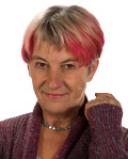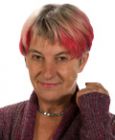Parapsychology
Out-of-Body Experiences: The Monster Under The Bed
Part 13: More full body Illusions
Posted September 19, 2019
Have you ever woken up in the night with the distinct, and creepy, sense that there is something, or someone, lurking under your bed – right there below you? This ‘feeling of a presence’ (FoP) is common, often occurring with epilepsy, schizophrenia and even migraines, but you don’t need any kind of illness to sense it. Perfectly happy and healthy children often fear the monster under the bed or the creature hiding in the cupboard. When my brother was young, he was convinced there were tiny monsters running about in the radiators near his bed.

Parents may worry that there’s something wrong with their child, or that something is upsetting them. They may just put it down to an overactive imagination and tell their child not to be silly. Yet these children are not being silly. These invisible creatures seem completely real and are even more frightening when combined with waking up unable to move as in the experience of sleep paralysis (another phenomenon I’ll return to).
There are many theories of what these sensed creatures are – the Old Hag of English mythology who comes in the night, a ghost of the dead or an evil spirit trapped among the living, a poltergeist intent on disruption, or an out-of-body traveller coming to visit.
These may all be vivid and exciting attempts at explanation. But neuroscience is now providing a completely different way of understanding them, suggesting that the feeling of a presence is better explained by knowing how the brain creates the sense of our own body as well as the sense of another person being close by. This experience may seem to be too different from the OBE to be worth mentioning here, but the connection is that, like OBEs, autoscopy and heautoscopy, the feeling of a presence entails a second body. The difference is that the other body is not seen, but only sensed.
Could this ‘presence’ be a version of oneself? In the 1950s, the psychiatrist Macdonald Critchley described the distress of an elderly patient who used to wake in the night with an intense feeling that there was somebody in the room. It was “… a person she knew; indeed, with whom she was very familiar. Sometimes, she was at a loss to decide who this could be, but on many occasions, it would dawn on her that this person was none other than herself.” (Critchley 1953 p 242).
Could this mean that the invisible presence is something like a phantom limb, only a phantom whole body. Swiss neuroscientist, Peter Brugger points out that the double often walks along with the person and even mimics their posture and movements. He suggests that parts of the brain’s body schema are projected outside the body, like an invisible Doppelgänger” (Brugger 2006). If this is correct, the sense of presence does share a mechanism with the OBE. Both involve the body schema being projected outside the physical body, and we know that the body schema depends on the temporoparietal junction – the TPJ, that part of the brain which, when stimulated, can induce an OBE. In other words this presence is a version of your own body schema.
If this is the right interpretation, it should also be possible to induce the experience with brain stimulation and this has been found as well. Neurosurgeons in Lausanne were investigating a young patient with epilepsy who had never felt the sense of presence, but when they stimulated her left TPJ she said she sensed a man right behind her (Arzy et al 2006). Rather creepily, when she sat with her arms around her knees the man hovered right behind her, almost clasping her in his invisible arms. And when she moved he tracked her position. Again, this suggests that the man was a version of her own body schema.
Over these last three posts I have explored the four types of full-body illusion and found many similarities between OBEs, autoscopy, heautoscopy and the sense of presence. So does that mean that all OBEs are to be explained this way – as changes to our body schema and sense of self?
Some people will say ‘Yes’. They find these similarities so convincing that there is no need for any supernatural theory of the OBE. Others will say ‘No’. They will argue that OBEs are quite different because they seem so realistic, most people who have them are perfectly well, both mentally and physically, and there is evidence that OBErs can really travel beyond their bodies. So which is right? Or are there different kinds of OBE?
For me this question is very personal. I want to know what happened to me in those few hours back in 1970. The big question is this: Are there are two kinds of OBE – the ‘real thing’ in which a soul, spirit or astral body leaves the physical body and goes to other worlds, or are all OBEs naturally occurring experiences dependent on the functioning brain? If there are two types I absolutely want to find out which sort I had. This is what I’ll investigate in my next post.
References
Arzy, S., Seeck, M., Ortigue, S., Spinelli, L., & Blanke, O. 2006. Induction of an illusory shadow person. Nature, 443, 287-287.
Brugger, P. 2006. From phantom limb to phantom body. In Human body perception from the inside out, Ed. G. Knoblich, Oxford, Oxford University Press, 171-209.
Critchley M 1950 The body image in neurology. Lancet 1:335-340


